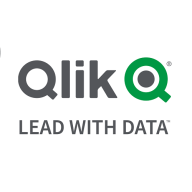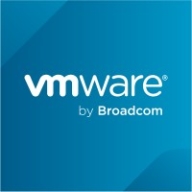

Qlik Compose and Spring Cloud Data Flow are competing in data management and integration, with Qlik Compose offering better pricing and scalability, while Spring Cloud Data Flow is superior in features and adaptability.
Features:Qlik Compose offers automated data migration, a comprehensive ETL solution, and data warehouse automation, enhancing efficiency and scalability. Spring Cloud Data Flow supports real-time data processing and boasts a microservices-based architecture, allowing flexibility and scalability in application development.
Room for Improvement:Qlik Compose could enhance its real-time processing capabilities and expand its integration with cloud services. Additionally, it would benefit from more community engagement and feature-rich updates to match competitors in dynamic environments. Spring Cloud Data Flow could improve its ease of use for non-specialists, optimize resource consumption during scale execution, and provide more straightforward deployment for users with limited hands-on expertise.
Ease of Deployment and Customer Service:Qlik Compose offers a user-friendly deployment model with robust technical support, facilitating a smooth transition. Spring Cloud Data Flow's container-based deployment offers greater customization but requires more technical expertise, accommodating complex deployments with higher flexibility.
Pricing and ROI:Qlik Compose provides competitive setup costs with a quick ROI due to efficient processes and reduced operational expenses. Spring Cloud Data Flow demands a higher initial investment, justified by its high-value return in dynamic environments that require adaptive data processing.
| Product | Market Share (%) |
|---|---|
| Spring Cloud Data Flow | 1.2% |
| Qlik Compose | 1.0% |
| Other | 97.8% |


| Company Size | Count |
|---|---|
| Small Business | 3 |
| Midsize Enterprise | 3 |
| Large Enterprise | 6 |
| Company Size | Count |
|---|---|
| Small Business | 3 |
| Midsize Enterprise | 1 |
| Large Enterprise | 5 |
Qlik Sense is a powerful business intelligence tool that offers a range of features to help organizations make faster and more informed decisions. Its primary use cases include operational and financial dashboards, self-service reporting, and centralized access to cross-functional reports. The solution is praised for its mobile platform, ease of use, data-sharing capabilities, and extensibility.
Qlik Sense has helped organizations improve data literacy, reduce time consumed in complex reports, and provide widely available MI to senior stakeholders. It also enables self-service analytics, improves data quality and governance, enhances collaboration, and reduces costs.
Spring Cloud Data Flow is a toolkit for building data integration and real-time data processing pipelines.
Pipelines consist of Spring Boot apps, built using the Spring Cloud Stream or Spring Cloud Task microservice frameworks. This makes Spring Cloud Data Flow suitable for a range of data processing use cases, from import/export to event streaming and predictive analytics. Use Spring Cloud Data Flow to connect your Enterprise to the Internet of Anything—mobile devices, sensors, wearables, automobiles, and more.
We monitor all Data Integration reviews to prevent fraudulent reviews and keep review quality high. We do not post reviews by company employees or direct competitors. We validate each review for authenticity via cross-reference with LinkedIn, and personal follow-up with the reviewer when necessary.